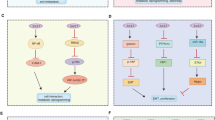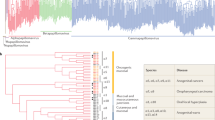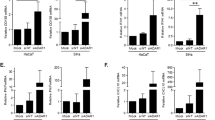Abstract
The ability of HPV E6 oncoproteins to induce the degradation of PDZ domain-containing MAGUK proteins correlates with their malignant potential. We previously showed that the HPV-6 E6 protein, when provided with the PDZ-binding domain from HPV-18 E6, acquires the ability to bind the Discs Large (Dlg) tumour suppressor and target it for degradation. Based on this finding we have extended this analysis to E6 proteins from a variety of different papillomavirus types. Cloning a PDZ-binding sequence onto the C-terminus of E6 proteins derived from low-risk mucosal, and low and high-risk cutaneous papillomavirus types, enables them to bind Dlg and a second MAGUK family member, MAGI-1. This renders the mucosally-derived low-risk chimaeric HPV E6 proteins capable of targeting Dlg for degradation, but they are unable to induce significant levels of degradation of MAGI-1. In contrast, none of the E6 proteins derived from cutaneous papillomavirus types induce significant degradation of either MAGI-1 or Dlg when provided with a PDZ-binding domain. These results demonstrate significant differences, both between mucosal and cutaneous HPV E6 proteins and in the pathways required for Dlg and MAGI-1 degradation.
This is a preview of subscription content, access via your institution
Access options
Subscribe to this journal
Receive 50 print issues and online access
$259.00 per year
only $5.18 per issue
Buy this article
- Purchase on Springer Link
- Instant access to full article PDF
Prices may be subject to local taxes which are calculated during checkout







Similar content being viewed by others
References
Barnes W, Delgado G, Kurman RJ, Petrilli ES, Smith DM, Ahmed S, Lorincz AT, Temple GF, Jenson AB, Lancaster WD . 1988 Gynecol. Oncol. 29: 267–273
Be X, Hong Y, Wei J, Androphy EJ, Chen JJ, Baleja JD . 2001 Biochemistry 40: 1293–1299
Bilder D, Li M, Perrimon N . 2000 Science 289: 113–116
Burnett AF, Barnes WA, Johnson JC, Grendys E, Willett GD, Barter JF, Doniger J . 1992 Gynecol. Oncol. 47: 343–347
Craven SE, Bredt DS . 1998 Cell 93: 495–498
Das K, Bohl J, Vande Pol SB . 2000 J. Virol. 74: 812–816
Dobrosotskaya I, Guy RK, James GL . 1997 J. Biol. Chem. 272: 31589–31597
Elbel M, Carl S, Spaderna S, Iftner T . 1997 Virology 239: 132–149
Fanning AS, Anderson JM . 1999 J. Clin. Invest. 103: 767–772
Gao Q, Kumar A, Singh L, Huibregtse JM, Beaudenon S, Srinivasan S, Wazer DE, Band H, Band V . 2002 Cancer Res. 62: 3315–3321
Gardiol D, Banks L . 1998 J. Gen. Virol. 79: 1963–1970
Gardiol D, Kühne K, Glaunsinger B, Lee SS, Javier R, Banks L . 1999 Oncogene 18: 5487–5496
Glaunsinger BA, Lee SS, Thomas M, Banks L, Javier R . 2000 Oncogene 19: 5270–5280
Goode S, Perrimon N . 1997 Genes Dev. 11: 2532–2544
Huibregtse JM, Scheffner M, Howley PM . 1991 EMBO J. 10: 4129–4135
Huibregtse JM, Scheffner M, Howley PM . 1993 Mol. Cell Biol. 13: 775–784
Inoue T, Oka K, Yong-II H, Vousden KH, Kyo S, Jing P, Hakura A, Yutsoda M . 1998 Mol. Carcin. 21: 215–222
Ishiwatari H, Hayasaka N, Inoue H, Yutsudo M, Hakura A . 1994 J. Med. Virol. 44: 243–249
Jackson S, Harwood C, Thomas M, Banks L, Storey A . 2000 Genes Dev. 14: 3065–3073
Kiyono T, Hiraiwa A, Fujita M, Hayashi Y, Akiyama T, Ishibashi M . 1997 Proc. Natl. Acad. Sci. USA 94: 11612–11616
Kurman RJ, Schiffman MH, Lancaster WD, Reid R, Jenson AB, Temple GF, Lorincz AT . 1988 Am. J. Obstet. Gynecol. 159: 293–296
Lee S, Weiss R, Javier R . 1997 Proc. Natl. Acad. Sci. USA 94: 6670–6675
Lee S, Glaunisinger B, Mantovani F, Banks L, Javier R . 2000 J. Virol. 74: 9680–9693
Liu Y, Chen JJ, Gao Q, Dalal S, Hong Y, Mansur CP, Band V, Androphy E . 1999 J. Virol. 73: 7297–7307
Lue RL, Marfatia SM, Branton D, Chisti HA . 1994 Proc. Natl. Acad. Sci. USA 91: 9818–9822
Mantovani F, Banks L . 2001 Oncogene 20: 7874–7887
Nakagawa S, Watanabe S, Yoshikawa H, Taketani Y, Yoshiike K, Kanda T . 1995 Virology 212: 535–542
Nakagawa S, Huibregtse JM . 2000 Mol. Cell. Biol. 20: 8244–8253
Petersen B, Buchwald C, Gerstoft J, Bretlau P, Lindeberg H . 1998 J. Laryngol. Otol. 112: 1101–1104
Pim D, Thomas M, Javier R, Gardiol D, Banks L . 2000 Oncogene 19: 719–725
Pim D, Storey A, Thomas M, Massimi P, Banks L . 1994 Oncogene 9: 1869–1876
Ponting CP, Phillips C, Davies KE, Blake DJ . 1997 Bioessays 19: 469–479
Querido E, Blanchette P, Yan Q, Kamura T, Morrison M, Boivin D, Kaelin W, Conaway R, Weliky Conaway J, Branton P . 2001 Genes Dev. 15: 3104–3117
Rady P, Schnadig V, Weiss R, Hughes T, Tyring S . 1998 Laryngoscope 108: 735–740
Rabah R, Lancaster W, Thomas R, Gregoire L . 2001 Pediatr. Dev. Pathol. 4: 68–72
Saras J, Heldin CH . 1996 Trends Biochem. Sci. 21: 455–458
Scheffner M, Werness BA, Huibregste JM, Levine AJ, Howley PM . 1990 Cell 63: 1129–1136
Scheffner M, Münger K, Huibregtse JM, Howley PM . 1992 EMBO J. 11: 2425–2431
Scheffner M, Huibregtse JM, Viestra RD, Howley PM . 1993 Cell 75: 495–505
Smith DB, Johnson KS . 1988 Gene 67: 31–40
Thomas M, Pim D, Banks L . 1999 Oncogene 18: 7690–7700
Thomas M, Glaunsinger B, Pim D, Javier R, Banks L . 2001 Oncogene 20: 5431–5439
Thomas M, Laura R, Hepner K, Guccione E, Sawyers C, Lasky L, Banks L . 2002 Oncogene 21: 5088–5096
Werness BA, Levine AJ, Howley PM . 1990 Science 248: 76–79
Woods DF, Hough C, Peel D, Callaini G, Bryant PJ . 1996 J. Cell Biol. 134: 1469–1482
Zhang J, Rose BR, Thompson CH, Jarrett C, Russell P, Houghton RS, Cossart YE . 1995 Gynecol. Oncol. 57: 170–177
Acknowledgements
We thank the following for their kind gifts of papillomavirus E6 open reading frames: Janet Brandsma for CRPV, Elliot Androphy for BPV-1, John Doorbar for HPV-1, Herbert Pfister for HPV-8 and Lou Laimins for HPV-31. This work was supported in part by a research grant from the Associazione Italiana per la Ricerca sul Cancro.
Author information
Authors and Affiliations
Corresponding author
Rights and permissions
About this article
Cite this article
Pim, D., Thomas, M. & Banks, L. Chimaeric HPV E6 proteins allow dissection of the proteolytic pathways regulating different E6 cellular target proteins. Oncogene 21, 8140–8148 (2002). https://doi.org/10.1038/sj.onc.1206026
Received:
Revised:
Accepted:
Published:
Issue Date:
DOI: https://doi.org/10.1038/sj.onc.1206026
Keywords
This article is cited by
-
Analysis of the PDZ binding specificities of Influenza A Virus NS1 proteins
Virology Journal (2011)
-
Human papillomavirus E6 and E7 oncoproteins as risk factors for tumorigenesis
Journal of Biosciences (2009)
-
Cell polarity proteins: common targets for tumorigenic human viruses
Oncogene (2008)
-
Crosstalk between the human papillomavirus E2 transcriptional activator and the E6 oncoprotein
Oncogene (2005)
-
The hScrib/Dlg apico-basal control complex is differentially targeted by HPV-16 and HPV-18 E6 proteins
Oncogene (2005)



